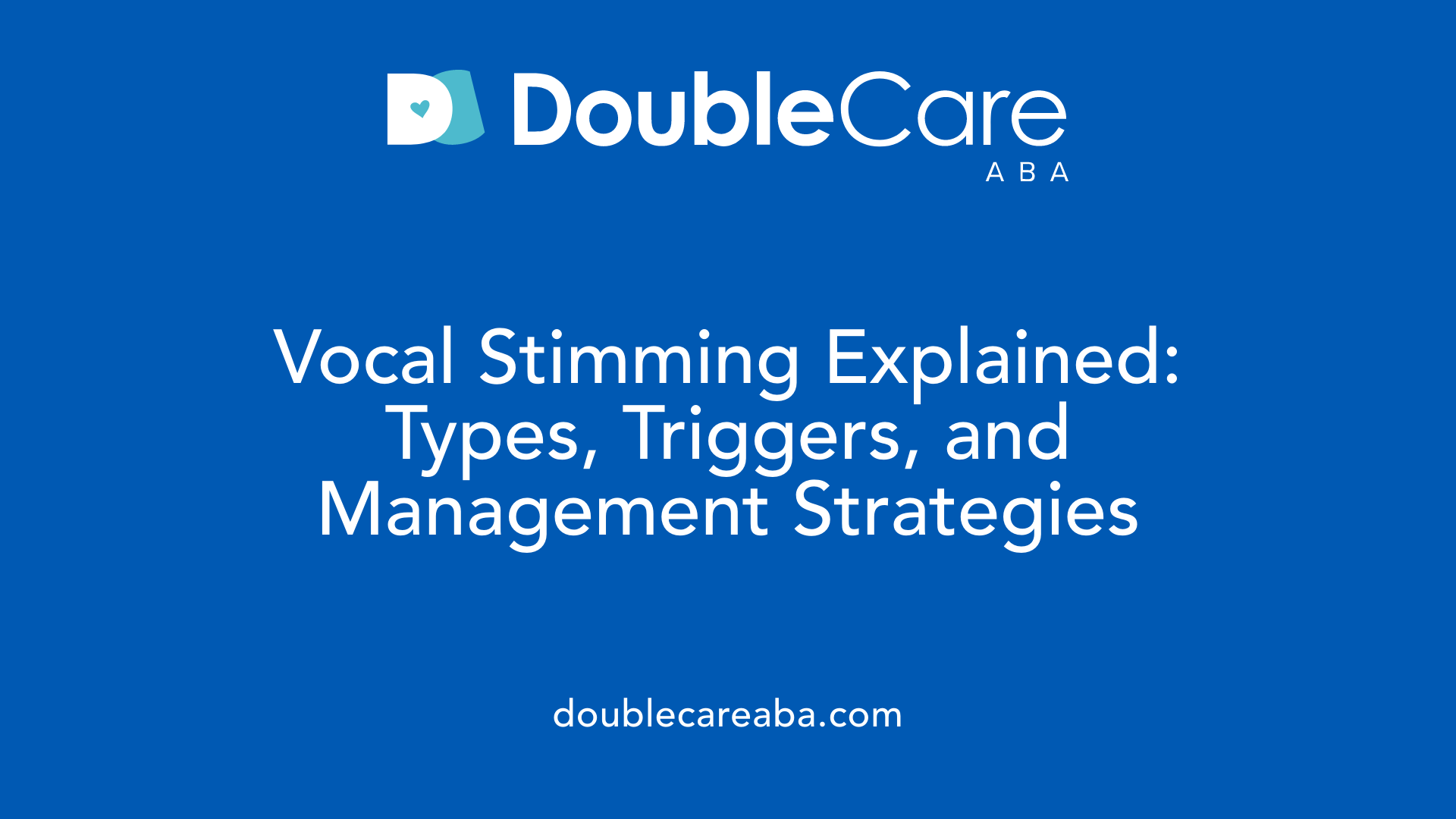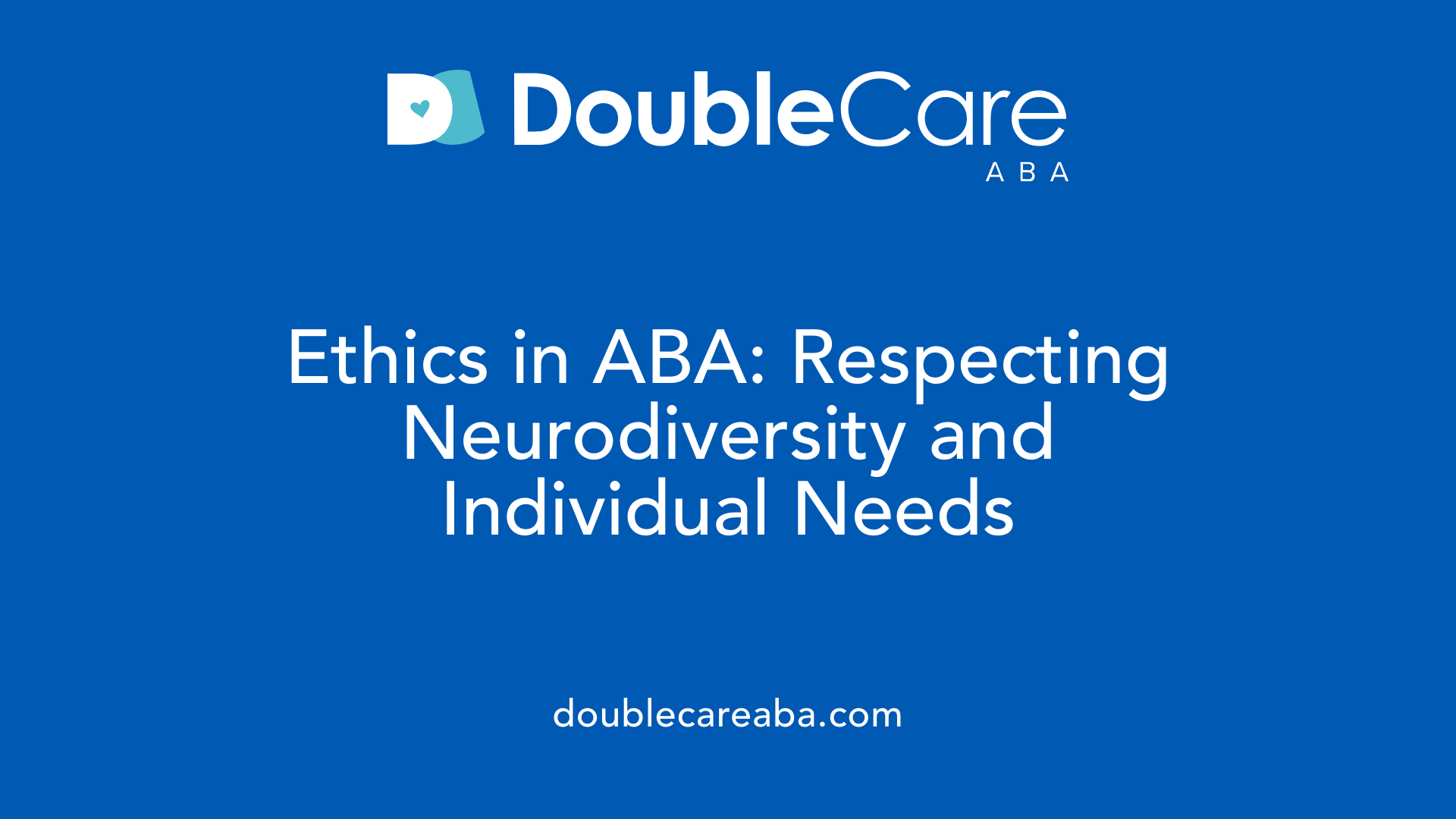Introduction to Vocal Stimming and ABA Therapy
Vocal stimming, a form of self-stimulatory behavior characterized by repetitive vocalizations such as humming, tapping, or repetitive speech, is common among individuals with autism spectrum disorder (ASD). While often a harmless way for autistic people to regulate emotions or sensory inputs, vocal stimming can sometimes interfere with daily functioning or cause social challenges. Applied Behavior Analysis (ABA) therapy plays a significant role in understanding, addressing, and supporting individuals who exhibit such behaviors. This article explores vocal stimming in autism through the lens of ABA therapy—its origins, development, techniques, and evolving practices—offering insight into effective and respectful behavioral interventions.
What Is Applied Behavior Analysis (ABA) Therapy and Its Focus on Autism?

Definition and scientific basis of ABA
Applied Behavior Analysis (ABA) therapy is a scientifically grounded approach that applies behavioral learning principles to help individuals with autism spectrum disorder (ASD). Originating from behaviorist theories by B.F. Skinner and refined since the 1960s, ABA focuses on understanding how behavior is influenced by the environment. It uses systematic observation and reinforcement strategies to shape behaviors, emphasizing measurable and observable outcomes.
Goals of ABA therapy for individuals with autism
The primary goals of ABA therapy are to increase useful skills and decrease behaviors that interfere with learning or daily functioning. It targets essential abilities like social interaction, communication, daily living skills, and reducing behaviors that may hinder the child's well-being or learning potential. ABA seeks to empower autistic individuals by fostering independence and participation in everyday activities.
Focus on skill development and behavior modification
ABA therapy carefully breaks down complex skills into manageable steps, teaching each part individually. It focuses on developing verbal and nonverbal communication, social skills, and adaptive behaviors. Behavior modification techniques are employed to reduce challenging behaviors and encourage appropriate alternatives, helping children improve their interactions and daily routines.
Use of positive reinforcement and ABC model
Positive reinforcement is a cornerstone of ABA; rewarding desirable behaviors motivates children to repeat them. The approach often uses the ABC model — analyzing Antecedents (what happens before a behavior), Behavior (the action itself), and Consequences (what follows). This helps therapists understand and modify behaviors effectively by adjusting triggers and outcomes.
Personalization and assessment in ABA
Each ABA program is personalized to meet the unique needs of the child through ongoing assessments and data collection. Therapy is tailored to individual strengths and challenges, with regular progress reviews guiding adjustments. Interventions can range from intensive daily sessions to less frequent, targeted activities depending on the child's age, abilities, and goals.
Historical Development and Evolution of ABA Therapy
Origins of ABA in the 1960s
Applied Behavior Analysis (ABA) therapy began in the 1960s, conceived as a way to help children with autism develop social skills and daily living behaviors. It was grounded in the behaviorist principles established by B.F. Skinner, focusing on observable behaviors and how they could be shaped through reinforcement.
Ole Ivar Lovaas and Behaviorist Principles
Ole Ivar Lovaas was a pioneer in introducing ABA to autism treatment. He adapted Skinner's behaviorist theories, aiming to help children with autism exhibit behaviors considered more typical or 'normal.' His work set the foundation for much of the ABA therapy used today.
Early Controversial Aversive Methods
In its early iterations, ABA included aversive techniques such as electrical shocks or loud shouting to reduce unwanted behaviors, including stimming. These methods were aimed at discouraging behaviors seen as disruptive but have since been widely criticized for their ethical implications.
Shift Toward Ethical and Play-Based Models
In response to ethical concerns and a better understanding of autism, ABA therapy evolved to focus more on positive reinforcement and less on punishment. This shift encouraged a more respectful and supportive environment for children undergoing therapy.
Modern ABA Approaches such as Pivotal Response Training and Early Start Denver Model
Modern ABA therapies like Pivotal Response Training and the Early Start Denver Model emphasize play-based, naturalistic interactions rather than rigid structure. These methods engage children more actively, support their interests, and promote learning in a more flexible, child-centered manner.
Qualified Professionals and Roles in Delivering ABA Therapy

Who provides ABA therapy and what qualifications do they have?
ABA therapy is delivered primarily by Board Certified Behavior Analysts (BCBAs) and Registered Behavior Technicians (RBTs). BCBAs hold advanced qualifications, including specialized coursework in applied behavior analysis, completion of supervised clinical hours, and a successful certification exam. These professionals design individualized behavior intervention plans based on comprehensive assessments such as Functional Behavior Assessments (FBAs).
RBTs are trained therapists who carry out these treatment plans directly with children. They receive specific ABA technique training and work under the close supervision of BCBAs. This partnership ensures that therapy delivery is both skilled and responsive to the child’s progress.
Importance of supervised practice and certification
Supervised practice is a critical component in maintaining high standards of ABA therapy. BCBAs mentor RBTs and other staff, overseeing implementation and making necessary adjustments based on ongoing data collection. Certification and continuous supervision assure families that interventions follow evidence-based methods.
Family involvement and ongoing data collection
Families play a vital role in making ABA therapy effective. They often participate in therapy sessions and support the generalization of skills at home. Consistent data collection by therapists allows for monitoring progress and tailoring interventions. This collaborative approach ensures that therapy is personalized to the child’s needs and adapts over time for the best outcomes.
ABA Therapy Goals and Techniques in Addressing Vocal Stimming
What are the typical goals and methods used in ABA therapy for individuals with autism?
Applied Behavior Analysis (ABA) therapy is designed to improve socially important skills in individuals with autism. Typical goals focus on enhancing communication, social interaction, daily living skills, and academic abilities. Efforts aim to increase helpful behaviors—like appropriate language use and adaptive skills—while reducing harmful or disruptive behaviors, including problematic vocal stimming that might interfere with learning or social functioning.
Focus on increasing helpful and decreasing harmful behaviors
ABA therapists work closely with individuals and families to develop personalized treatment plans. These plans often target replacing disruptive vocal stimming with functional communication or less intrusive behaviors, but always respect the individual's needs and comfort. The goal is not to suppress stimming outright but to reduce behaviors that cause harm or inhibit progress.
Methods used in ABA therapy
ABA employs several core methods:
- Positive reinforcement: Rewarding desired behaviors to increase their occurrence.
- Prompting and fading: Providing cues or guidance initially, then gradually reducing assistance.
- Chaining: Breaking down complex behaviors into smaller steps taught sequentially.
- Modeling: Demonstrating appropriate behaviors for imitation.
Specific techniques in ABA therapy
Key techniques applied include:
- Discrete Trial Training (DTT): A structured teaching method that breaks skills into small, manageable steps with clear instructions, immediate reinforcement, and repetition.
- Pivotal Response Treatment (PRT): Play-based and naturalistic, focusing on motivation and self-initiation.
- Natural Environment Teaching (NET): Teaches skills in everyday settings to promote generalization.
Application to vocal stimming
ABA can help manage and reduce problematic vocal stimming by identifying triggers and teaching alternative communication methods. For instance, through Functional Communication Training (FCT), children learn to request, express needs, or seek attention appropriately instead of engaging in disruptive vocalizations.
Importance of individualized, evidence-based strategies
Intervention success depends on tailoring methods to each child’s unique strengths and challenges. ABA therapy incorporates data collection and ongoing assessment to adapt approaches effectively, promoting meaningful improvements while respecting neurodiversity and the child’s well-being.
Understanding Vocal Stimming: Types, Causes, and Effects

What is Stimming?
Stimming, or self-stimulatory behavior, involves repetitive body or object movements commonly seen in autistic individuals. It's a natural way for many to regulate emotions and sensory input.
What Are Types of Vocal Stimming?
Vocal stimming includes auditory behaviors such as humming, tapping, or repetitive speech. These sounds provide sensory feedback that some find calming or emotionally satisfying.
What Triggers Vocal Stimming?
Emotions greatly influence stimming. Excitement, happiness, boredom, anxiety, stress, and fear can all prompt vocal stimming. For many, it's a coping mechanism to handle overwhelming or changing sensory environments.
Is Vocal Stimming Harmful?
Most vocal stimming is harmless and helps individuals manage sensory and emotional needs. However, if vocal stimming becomes physically harmful or disrupts daily functioning, it may require support.
Why Does Vocal Stimming Matter for Autistic Individuals?
Vocal stimming assists sensory regulation, providing predictable sensory input. Recognizing its role helps caregivers support autistic individuals while respecting their need for self-soothing behaviors.
Application of Verbal Behavior Therapy Within ABA to Support Language Development

What is Verbal Behavior (VB) Therapy in ABA?
Verbal Behavior therapy is a specialized branch of Applied Behavior Analysis (ABA) focused on teaching communication and language to children with autism. Rooted in B.F. Skinner's behavioral theories, VB therapy emphasizes connecting words to their functional purposes rather than just categorical labels.
How Does VB Therapy Focus on Functional Language Operants?
Language is broken down into four main operants in VB therapy:
- Mand: Requests, like asking for a cookie.
- Tact: Comments or drawing attention to something.
- Intraverbal: Responding to questions or conversation.
- Echoic: Repeating words or sounds. This classification helps therapists target specific communication skills effectively.
Why Are 'Mands' Taught First?
' Mands' are the easiest and most natural category for children to learn because they involve making requests that directly result in receiving the desired item or action. For example, saying “cookie” leads to getting a cookie, which reinforces communication through immediate reward.
What Learning Techniques Are Used in VB Therapy?
VB therapy employs an errorless learning approach, where therapists use prompts to guide children toward the correct response without allowing mistakes. Over time, these prompts are gradually faded to encourage independent communication.
Who Are the Therapists Delivering VB Therapy?
Professionals such as psychologists, behavior specialists, special education teachers, and speech-language pathologists are typically trained to administer VB therapy. This multidisciplinary approach ensures comprehensive support tailored to each child's needs.
What Evidence Supports the Use of VB Therapy?
A 2006 review analyzing 60 studies found that VB therapy effectively helps many children with autism develop spoken language. Current research also underscores that early and intensive behavioral therapies, including VB, can significantly improve cognitive and language skills.
How Does VB Integrate with ABA Techniques?
VB is often integrated within broader ABA programs aimed at improving verbal communication abilities. Techniques like Discrete Trial Training (DTT), Natural Environment Training (NET), and Functional Communication Training (FCT) complement VB by breaking down language into manageable steps, teaching communication in real-world settings, and replacing challenging behaviors with appropriate verbal requests.
This synergy within ABA empowers children with autism to develop functional and meaningful communication skills, facilitating their social interactions and daily living.
Balancing Respect and Treatment: Ethical Considerations Addressing Vocal Stimming in ABA

What criticisms have been made regarding early ABA methods, and why is ethical practice vital today?
Early ABA therapy included harsh aversive strategies such as electrical shocks and shouting aimed at reducing behaviors like stimming to make children appear more "normal." These methods have drawn significant criticism for the potential harm caused and for overlooking the individual's dignity and unique neurological makeup. Today, ethical practice requires abandoning these aversive techniques and respecting autistic individuals' rights and experiences.
How does modern ABA respect neurodiversity while addressing disruptive or harmful vocal stimming?
Modern ABA embraces a more sensitive and individualized approach that balances behavioral support with respect for neurodiversity. While vocal stimming (e.g., repetitive humming or noises) is often a natural coping mechanism, therapy focuses on managing stimming only when it disrupts learning, causes distress, or poses risks. This ensures interventions prioritize quality of life rather than enforcing normalization.
What is the role of family and individual autonomy in choosing interventions?
Families and autistic individuals play a central role in deciding whether to pursue therapy. Respect for autonomy means caregivers and individuals choose interventions based on personal goals and comfort levels. Modern ABA programs encourage active family participation and adapt techniques to each child's preferences and needs.
How has modern ABA therapy shifted towards supportive, individualized, and play-based methods?
Contemporary ABA models like Pivotal Response Training and the Early Start Denver Model offer flexible, play-based, and naturalistic approaches. These methods reduce regimented drills and focus instead on motivation and engagement, making therapy more enjoyable and respectful of each child’s individuality.
How do behavioral and occupational therapies help manage stimming?
Behavioral and occupational therapists work to identify triggers that provoke stimming behaviors and teach alternative coping strategies. This targeted support helps reduce harmful or disruptive stimming while acknowledging that not all stimming requires modification.
When is medication considered in managing stimming?
Medication is reserved for cases where stimming causes physical harm or significant distress. Options may include SSRIs, antianxiety drugs, or antipsychotics but are used cautiously and always alongside behavioral strategies.
What is the ultimate goal of these ethical, respectful interventions?
The aim is to improve communication, emotional expression, and adaptive skills, enhancing overall quality of life without enforcing conformity to neurotypical behaviors. Supporting autistic individuals to thrive on their own terms remains central to modern practice.
Conclusion: Promoting Understanding and Effective Support for Vocal Stimming in Autism
Vocal stimming is a natural, often beneficial behavior for many autistic individuals as a means to cope with sensory and emotional experiences. Applied Behavior Analysis (ABA) therapy, with its origins in behaviorist science, has evolved into an evidence-based, individualized approach aimed at fostering vital skills in communication, social interaction, and daily living, while respectfully addressing behaviors like vocal stimming when they interfere with wellbeing. Qualified professionals deliver ABA therapies using techniques grounded in positive reinforcement, careful assessment, and continuous adaptation, including specialized interventions such as Verbal Behavior therapy to support language development. Ethical considerations emphasizing respect for neurodiversity and personal autonomy continue to guide modern practice. Ultimately, a balanced approach ensures that interventions around vocal stimming support autism individuals' quality of life, communication, and independence in a compassionate, effective manner.
References
- The controversy over autism's most common therapy
- Verbal Behavior Therapy
- The Applied Behavioral Science Institution: Verbal Behavioral ...
- ABA Speech Therapy Techniques for Autism: Effective ...
- Stimming: Understanding this symptom of autism
- Applied Behavior Analysis (ABA) for Children With Autism
- Applied Behavior Analysis (ABA)














